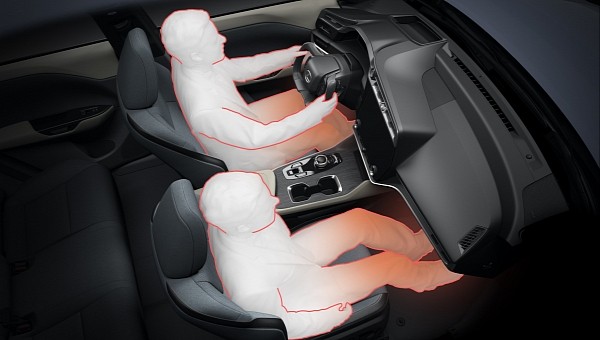Heating systems can take a heavy toll on an electric vehicle’s battery during winter trips. Modern EVs use a heat-pump system to generate heat more efficiently inside the cabin, but Lexus had a better idea.
Heating or cooling the cabin significantly shortens an EV’s range since maintaining the optimum temperature can waste a lot of energy. This is especially true for electric cars operating in extreme climate environments, where it’s either very warm in the summer or very cold in the winter. In most vehicles, air conditioning helps keep the air cool while a radiator warms it up.
Whether it works by circulating hot water or electrically heating a coil, these are so-called radiant heating systems. Their common characteristic is that they heat the cabin air, which transfers some heat to nearby human beings and objects. Since there are multiple energy-conversion steps involved, they are not very efficient. It doesn’t matter much with an ICE vehicle because the heat generated by the engine is going to waste nevertheless.
In the case of an electric vehicle, this energy needs to be taken away from the car’s battery. That’s why carmakers that sell EVs in northern territories try to make the heating as efficient as possible. A heat pump is the best alternative because it uses less energy to heat the cabin radiators. But other heat sources can prove even better at saving battery. Lexus has taken a page from the house heating systems and fitted the RZ 450e with a radiant heating system.
Unlike convection heating, radiant heating does not heat the air but directly the objects. Think of the sun, which can heat things from a distance, although the air remains cold. Of course, the air around the objects also heats, not from the sun, but from the Earth. This is why we have warmer air closer to the ground and colder the higher we go in the atmosphere. Radiant heating is highly efficient and less energy consuming than convection heating.
Lexus uses it on the higher trims of the RZ 450e electric crossover to warm the front occupants. The two panels placed at knee level, under the dashboard, utilize infrared radiation to heat the solid objects in their line of sight. If the driver or the passenger accidentally touches the panels, the surface temperature is automatically reduced to 43 degrees Celsius (109 degrees Fahrenheit) to prevent discomfort.
Lexus uses a more poetic description of the whole process, with words like “heart-warming innovation.” The Japanese carmaker also claims the system offers front passengers “a comforting sensation on cold days, similar to having a warm blanket placed around their legs.” Indeed, the panels warm the driver and the front passenger quicker than a conventional heating system while consuming 8% less energy. They complement the air conditioning system, reducing its load and extending the vehicle’s range.
Whether it works by circulating hot water or electrically heating a coil, these are so-called radiant heating systems. Their common characteristic is that they heat the cabin air, which transfers some heat to nearby human beings and objects. Since there are multiple energy-conversion steps involved, they are not very efficient. It doesn’t matter much with an ICE vehicle because the heat generated by the engine is going to waste nevertheless.
In the case of an electric vehicle, this energy needs to be taken away from the car’s battery. That’s why carmakers that sell EVs in northern territories try to make the heating as efficient as possible. A heat pump is the best alternative because it uses less energy to heat the cabin radiators. But other heat sources can prove even better at saving battery. Lexus has taken a page from the house heating systems and fitted the RZ 450e with a radiant heating system.
Unlike convection heating, radiant heating does not heat the air but directly the objects. Think of the sun, which can heat things from a distance, although the air remains cold. Of course, the air around the objects also heats, not from the sun, but from the Earth. This is why we have warmer air closer to the ground and colder the higher we go in the atmosphere. Radiant heating is highly efficient and less energy consuming than convection heating.
Lexus uses it on the higher trims of the RZ 450e electric crossover to warm the front occupants. The two panels placed at knee level, under the dashboard, utilize infrared radiation to heat the solid objects in their line of sight. If the driver or the passenger accidentally touches the panels, the surface temperature is automatically reduced to 43 degrees Celsius (109 degrees Fahrenheit) to prevent discomfort.
Lexus uses a more poetic description of the whole process, with words like “heart-warming innovation.” The Japanese carmaker also claims the system offers front passengers “a comforting sensation on cold days, similar to having a warm blanket placed around their legs.” Indeed, the panels warm the driver and the front passenger quicker than a conventional heating system while consuming 8% less energy. They complement the air conditioning system, reducing its load and extending the vehicle’s range.







